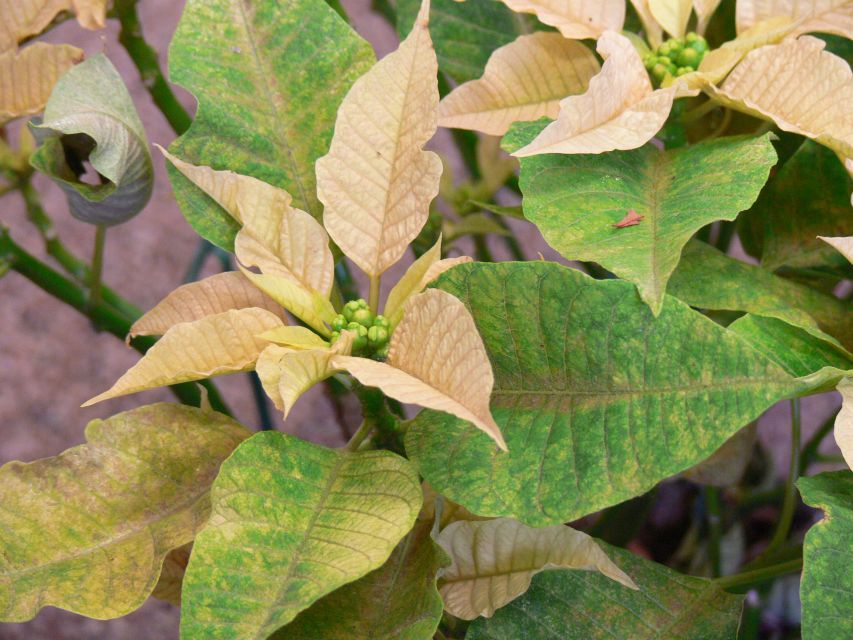When Managing Pests in Poinsettias, the Earlier the Better

Photo: OMAFRA
During poinsettia production season, the late summer/early fall months are the right time to watch for certain pests and diseases. A recent OnFloriculture.com post covers the first signs of root rots, as well as whitefly and Lewis mite monitoring and management. As healthy plants are better able to defend themselves from pests and diseases, it’s also a good time to stay on top of plant nutrition.
Early August is when you might start seeing the beginning of root rot issues in plug trays or at potting up (especially Pythium, but also Rhizocontina, Phytophthora, and even Fusarium). Although these won’t kill the rooted cutting outright, these diseases will proceed slowly and potentially cause large die-offs mid Fall. Make sure you’re regularly inspecting plants to determine if you should treat now, to head off problems later.
Evidence of root rots include:
- Poor rooting
- Stunted growth
- Discolored (black or brow) roots
- Loss of lower leaves
- Cankers on stems.
Although Lewis mites come in on cuttings, they are impossible to notice at low densities in June/July. Preventative predatory mite applications are possible, as is a single application of a miticide on cuttings. But pesticide use early in the crop runs the risk of interfering with your whitefly bio program.
As Lewis mite only seems to be an issue in random years, the better option is to regularly walk the crop, looking for the characteristic stippling symptoms, to figure out if you have it. Mite populations build up enough to show damage as early as August, so it’s a good idea to start now. If you don’t see anything by October, you should be good.
For more information, including tips on whitefly control and how to monitor nutrient levels, check out the original OnFloriculture.com post here.









